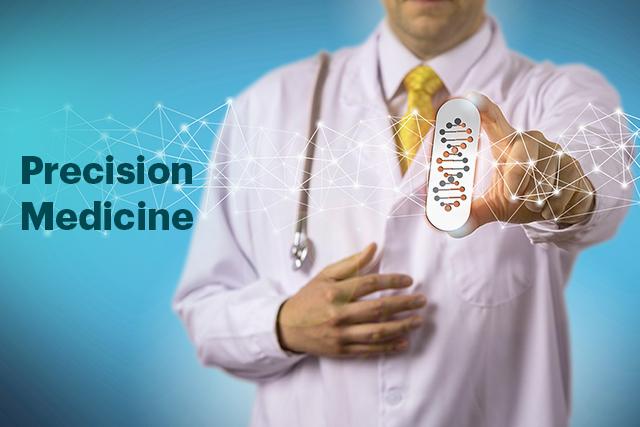A revolutionary approach to healthcare called precision medicine attempts to offer patients individualised treatment programmes based on their genetic make-up, way of life, and environmental circumstances. A revolution in the practise of precision medicine has been made possible by the rise of hyperconnectivity in healthcare, which has been made possible by technological advancements and connected gadgets. This blog examines the relationship between hyperconnectivity and precision medicine and how it may change how we approach healthcare.
I. The Foundation of Precision Medicine:
Precision medicine is based on the idea that every patient is different, and that their care should reflect this uniqueness. The Human Genome Project, which gave crucial insights into how genetics affect illness risk and treatment response, is where it all began. Using genetic data analysis, medical professionals can now create customised medicines with better results and fewer adverse effects. The foundation of precision medicine is patient-centered care and personalised treatment programmes, which promotes a more proactive and successful approach to healthcare.
II. Embracing Hyperconnectivity in Healthcare:
In order to gather real-time patient data, hyperconnectivity in healthcare refers to the integration of multiple digital instruments, such as the Internet of Things (IoT), wearable technology, and health monitors. Through continuous communication between patients, healthcare professionals, and medical equipment, this interconnection enables speedier and more accurate diagnosis, monitoring, and treatment choices. Particularly in impoverished areas, the growing adoption of hyperconnectivity in healthcare is revolutionising patient care and giving remote access to medical experts.
III. Interpreting Big Data for Precision Medicine:
The difficulty is in gleaning valuable insights from the massive amounts of healthcare data that hyperconnectivity generates. In order to analyse large amounts of data, find trends, and forecast patient outcomes, it is essential to use artificial intelligence (AI) and machine learning techniques. Healthcare professionals can access a variety of information by using cloud computing for storage and accessibility, which will ultimately result in decision-making based on the best available evidence and improved patient outcomes.
IV. Hyperconnectivity and Patient Engagement:
By giving patients access to their health information and encouraging active engagement in their care, hyperconnectivity empowers patients. Under hyperconnectivity, telemedicine and virtual consultations have thrived, enabling patients to receive medical advice and keep track of their illnesses from a distance. This greater patient involvement develops a sense of ownership over their health and strengthens the doctor-patient bond, resulting in treatment programmes that are more successful.
V. Improving Diagnostics Through Hyperconnectivity:
By enabling seamless data sharing between medical devices, patients, and healthcare professionals, hyperconnectivity makes a substantial contribution to early illness diagnosis and prevention. Remote monitoring makes it possible to continuously track vital signs and other health indicators, which makes it particularly helpful in the management of chronic diseases. Precision medicine can open up new doors for accurate diagnosis and focused treatments by merging multi-omics data (genomics, proteomics, metabolomics, etc.).
VI. Ethical and Privacy Considerations:
As hyperconnectivity gains traction, worries concerning the security and privacy of patient data have emerged. It’s critical to strike a balance between maintaining patient privacy and data accessibility for precision medicine. To ensure responsible use of patient data in precision medicine research and practise, healthcare professionals and governments must impose strict ethical standards and reliable data protection safeguards.
VII. Real-world Applications of Hyperconnectivity and Precision Medicine:
There are several success examples that show how precision medicine and hyperconnectivity can be used to treat rare diseases and enhance patient outcomes. Hyperconnectivity has been integrated into clinical trials, increasing efficiency and accuracy and hastening the development and approval of new drugs. Precision medicine research is being advanced thanks to international partnerships and knowledge-sharing programmes.
VIII. Challenges and the Future:
Its enormous promise, incorporating hyperconnectivity into conventional healthcare systems has a number of difficulties, including interoperability, data standardisation, and financial concerns. For precision medicine and hyperconnectivity to fully realise their potential, these obstacles must be removed. Precision medicine is set to change the way healthcare is delivered in the future as technology advances. It will become more accessible and affordable.
Conclusion:
A new era of healthcare is being ushered in by the convergence of precision medicine and hyperconnectivity, in which patients receive customised treatments based on their particular traits and health data. Precision medicine holds the promise of shifting healthcare from a one-size-fits-all strategy to a patient-centric, data-driven paradigm, ultimately leading to improved health outcomes and a healthier global population. This is accomplished by using the power of hyperconnectivity. For precision medicine to reach its full potential in the next years, it will be crucial to embrace this synergy.



